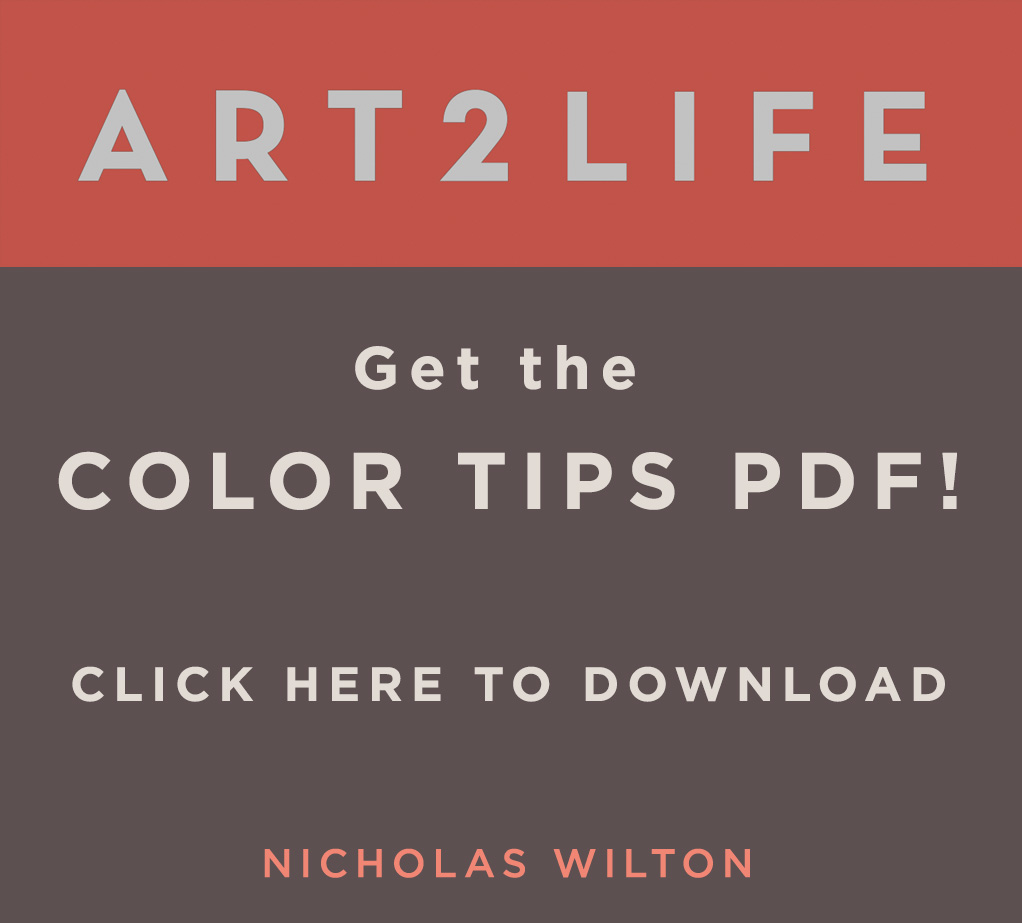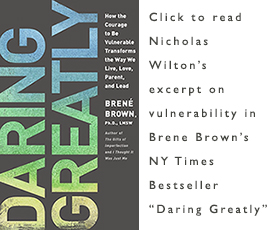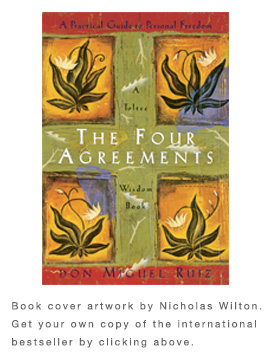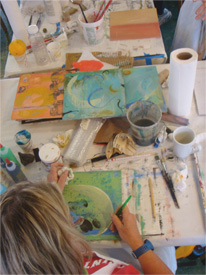When the art you love is not yours
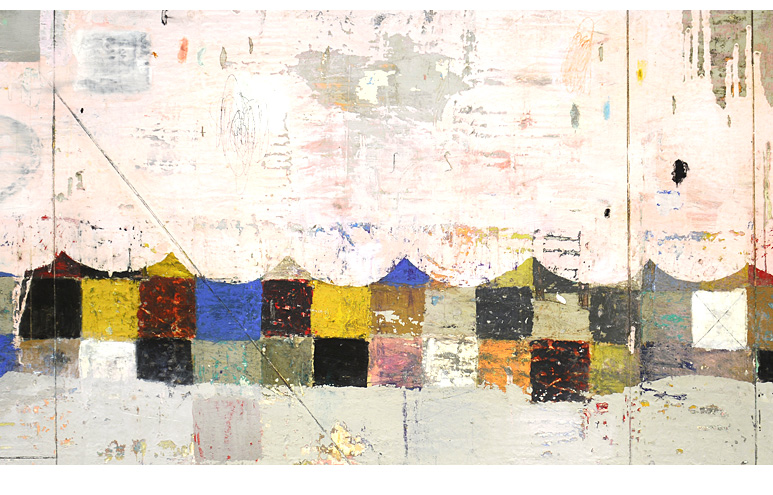 I clearly remember idolizing certain artist’s work. That happened a lot because there is just a ton of art out in the world that is amazing. I used to compare my art to the highest standards I could find. In many cases I loved other people’s work much more than mine. And I guess that is to be expected because, especially in the beginning your art is not as developed as possibly someone else’s who has been working much longer. It is hard to compare.
I clearly remember idolizing certain artist’s work. That happened a lot because there is just a ton of art out in the world that is amazing. I used to compare my art to the highest standards I could find. In many cases I loved other people’s work much more than mine. And I guess that is to be expected because, especially in the beginning your art is not as developed as possibly someone else’s who has been working much longer. It is hard to compare.
I remember thinking that if I could hang any art on my walls it certainly wouldn’t be mine. It would be a specific handful of paintings of other people’s art.
Friends wondered why I didn’t have more of my art on my walls. I used to say that I was looking at my art all day long so I didn’t need to see more of it. But looking back I think the real reason was that I didn’t really love what I was doing or how it often turned out. There was a disconnect between what I was making and what I loved. Maybe I didn’t believe I could make the kind of work that I loved. Or maybe I was just scared to really try. I think the latter was more the reason.
Anytime in life when you commit, when you say out loud what you want, even though the chances are slim you will ever get it, the fear of failure grows bigger. This probably is the case because the chances of failure are bigger. It feels much safer to keep things pretty good and pass on trying for great.
The only problem I found with this thinking is that pretty good is just that. It is kind of boring after a while. At some point, it seems important to go for something big. Something that matters to you. It might not be your art. It could be anything. The only real criteria is that it matters to you. Big time.
So at some point, for me, things began to shift. Or rather, my thinking did. I raised the bar on the kind of art I was making. I eventually decided that, even though it was scary to ask myself for greatness, I would start trying anyway. I set about trying to make only the kind of art I loved.
Obviously I couldn’t pull it off all the time. In fact, rarely did the outcome match my expectations. I think this is the case for all artists. But the important thing, I believe, is that we have the expectation. That we are fully in.
Today I do hang my art on some of my walls. I am not tired of it at all. It reminds me that I have to keep trying to make art that I love. That it is possible to make something that matters so much that you just can’t let it go. That occasionally we can create something that is such a part of us, that it is even too painful to sell.
When this happens you know you are on to something. Something that is way better than pretty good. It is something that matters. It is a once in a blue moon kind of a something. And it is actually, great.
Picture This
Use your Iphone to help find your way.
It Takes A Long Time To Become Young
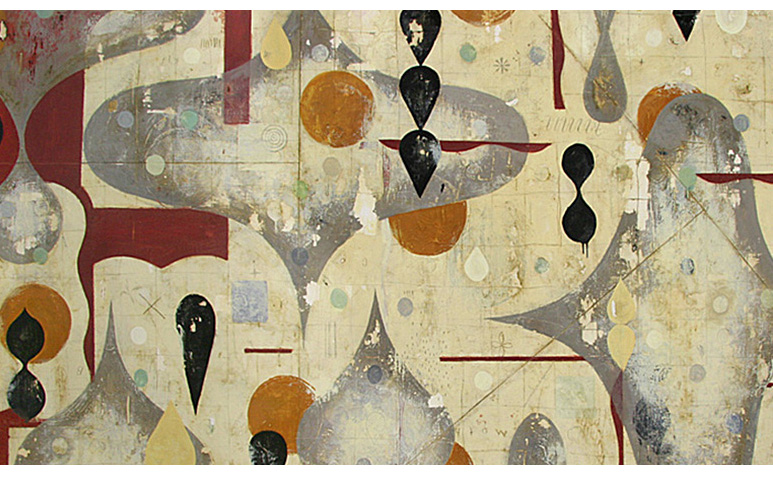 Have you ever noticed that when you are making your art and it is all working out that it is almost as if you are not entirely there? You are driving the bus but it seems like you do not have to try very hard. Almost like it is driving itself. Art making sometimes can feel that easy.
Have you ever noticed that when you are making your art and it is all working out that it is almost as if you are not entirely there? You are driving the bus but it seems like you do not have to try very hard. Almost like it is driving itself. Art making sometimes can feel that easy.
I love it when that happens but it rarely stays that way for long. If I overthink and concentrate too much I lose that ability to just let the art unfold naturally. Instead it feels hard and somewhat forced.
I realize I tend to tighten up when I am over focusing on a new technique or, perhaps, trying something I haven’t before. It seems like the making of the art just goes slower. It becomes more effortful.
However once I have learned that new something, once I have done it a few times it starts to become second nature again. I think it just takes time to integrate new information. And then I start to get those days that art making feels super easy again. It is like I am not even trying.
It reminds me of how I did things as a child. I remember just naturally getting involved in something, following my curiosity wherever it wanted to lead me. There was no agenda. No particular reason to do anything except for the simple joy of doing it. Everything was approached that way.
This is actually how I wandered into art in the first place. It was simply enjoyable.
I found this quote the other day by Pablo Picasso “It takes a long time to become young”
Which got me to thinking.
Maybe that is why it feels so refreshing to occasionally get totally in sync with our creativity. When our art just flows. It feels good, especially now, as busy adults with a world of concerns and long to do lists following us around. Maybe when we fall into that easy place where art making is simply effortless it is a reminder of what is still possible. The way it is supposed to be. Or rather the way it all started out being in the first place when curiosity and joy were simply enough.
Going Big
A little about the tools to help you get there.
Making your art great before you begin.
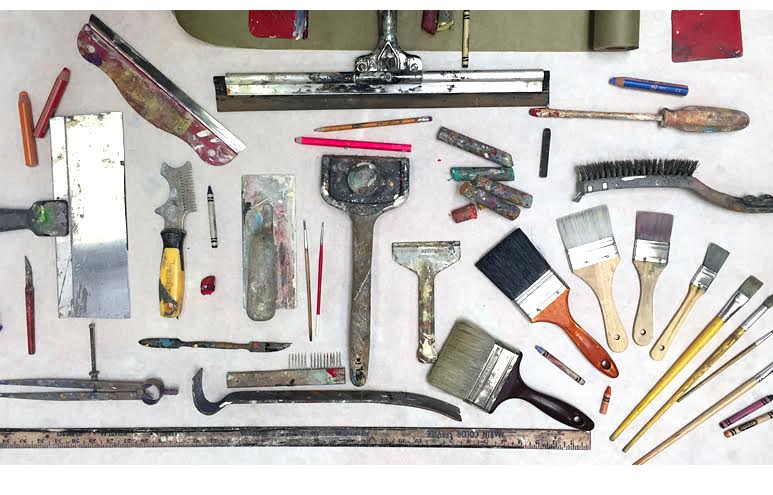
I teach a lot about differences in art making. Differences between colors, shapes and textures, values and even emotions. The thinking being, that a bright color will look even brighter if paired with its opposite. A dull color. A light shape will look even lighter next to a dark shape. It also relates to states of being. Being careful, cautious in parts of our art especially looks good when paired with an area that has been made by being slightly out of control.
Interestingly, this juxtaposition of opposites, this enhancement of things also works in life too. For example, I can’t stop thinking about this fabulous ice cream cone I had this past Sunday right after crossing the finish line of a particularly, grueling running race I do every year. The sweet, cold ice cream cone and the dry, extremely tiring, 7 mile cross country race, for me, were truly opposites. And experiencing them together improved both. They each become more, in the presence of each other.
This play of opposites enhances not just Art but also Life. Both sides of the equation are positively affected by the richness and variation of differences.
On the last painting I made I used a tiny dental picking tool. I used a #2 pencil and brushes that make fine lines. But then I also used 3 and 5-inch paint brushes. I used a 13 in roll of paper towels along with rags to smear and adjust paint. I have a car window squeegee that is about 13 in wide. I have a 7-inch paint scraper. I builder’s scribe for making large carved circles. I used a 6-inch orbital sander with 60 grit sandpaper. I used 16-inch wide x 5 ft. sheets masking paper to apply paint and adjust its texture. And I also used a house brick to gouge the surface. I have a box of greasy pastels that I constantly use in addition to oil paint.
When I laid out all the tools on the table I was kind of shocked at how diverse they all looked. Just the tools alone are interesting. In fact lining them up against each other is in a way just like a painting. Combining the small with the large. The delicate with the rough.
I realized you could tell a lot about someone’s art by looking at the tools used to make it. Maybe if the tools are varied, if they are gathered over time, discovered one by one based upon the differences in marks they each create greatly contribute to the potency of the final art.
Maybe some of the richness in our work can be discovered before we even begin.
Maybe by making an effort to push our awareness about the kinds of mark making tools we use, we can more easily create art that not only moves us, but everyone else too.
Want To Paint On A Greek Island?
The only problem is getting the paintings back.
I think I have found a solution.
Maybe it could work for you too.
Grow Into Your Art
If you make something out of the ordinary it can feel a little disconcerting.
But maybe this is a good thing.
For you and your art.
The Biggest Reason To Make Your Art
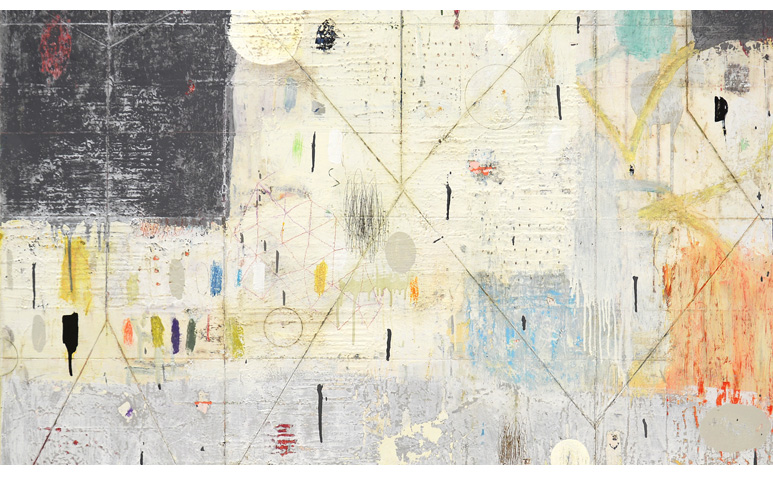 I have just one thought this week and it keeps coming up again and again for me. It has to do with one of the primary, worthwhile reasons to make your art. It has nothing to do with what you hope to get out of it. Not monetarily. Not even notoriety. None of that.
I have just one thought this week and it keeps coming up again and again for me. It has to do with one of the primary, worthwhile reasons to make your art. It has nothing to do with what you hope to get out of it. Not monetarily. Not even notoriety. None of that.
And even though art making is what brings you alive it isn’t even about that part either.
Sometimes Art making is super hard and pushes you to your edge. Some days it feels like you are totally ill equipped to be even trying. Other days you feel like you and your art are on top of the world. But that isn’t the reason I am talking about either.
The reason is entirely outside of ourselves…
And this is it:
Making personal, authentic art gives the rest of the world permission to do the same.
If we have the courage to step it up, to actually investigate what, who and why we are, in connection to our art, then it offers, by example, the possibility for others to do the same. And this has a huge impact in the world.
What begins quietly in your studio by no means stays there. It becomes part of something moving, something bigger.
This shared momentum; this rising tide of creativity and possibility is the best place to be as an artist. I think most of you have experienced this place. The support and inspiration found by witnessing the success of others makes anything possible for the rest of us.
I know first hand that I first make my Art firstly for me but I also know that it is not just about making art for myself anymore. I also know I need to make it for you too. We need to make it for each other.
And that, makes it all even more worthwhile.
The Gift Of Anticipation
There always is a little anticipation, a little nervous energy when we are starting something we haven’t before. In art and in life, this feeling is useful. It provides the juice, the energy to begin and make something different.
How do you start something new?
Here is the link to the pencils I use in the video: http://tinyurl.com/gmwoyme
How do you know when you are done?
 Sometimes it is not always clear when a particular piece of art is done.
Sometimes it is not always clear when a particular piece of art is done.
And because of that, sometimes, I just keep changing the art more and more till at some point the painting I had been trying to finish is now so different that it has become an entirely new painting, And this new one has a whole new list of problems just as long as the previous one. So I wonder…am I getting anywhere? It doesn’t feel like it.
So how do you know when to stop? Surely it has to be different for everyone.
However, below, are some general guidelines I use. These keep me on course for actually occasionally finishing something, instead of always veering off in a new direction.
You might be almost finished when…
The Changes are becoming smaller and smaller.
This took me awhile to realize. In the beginning of making something, the choices are wide open. You art can be anything. As a result, the changes generally speaking tend to be bigger in scale. There is much work to be done in order to even halfway like it so the artist feels less inhibited at this early stage. But as the painting develops, and if you are leaving what you like and changing what you don’t, in time there becomes less and less to change. The changes overall become less. The further you go along, the more refined the adjustments become. This is a good indication you are perfecting something and that it is heading towards completion. Maybe consider stopping before drastically changing things, and return a bit later with more objectivity. You might realize you are closer to being done than you thought.
The Changes become so refined they might not be noticeably changing the art.
Sometimes when a painting is basically finished, there is a tendency to keep on making miniscule changes. When these become so small and insignificant that they actually don’t change the painting, then this a good time to stop. Possibly wait a day or two for objectivity to return and see it with fresh eyes. You probably are done but didn’t realize it.
You start to think about starting something new.
It is a good sign if your mind starts to wander a little while you are making the final adjustments to your art. It is only natural that you would start to crave the stages in art making that feel bold and dramatic while you are quietly, thoughtfully finishing. Creating something from nothing is an awesome feeling and never does it feel more apparent than in the very beginning stages of art making. Maybe take a hint from how you are feeing inside. Call this one painting done and start again with something new.
Each piece of art has something to teach us. Each offers a kernel of wisdom if we are paying attention. Completing this piece of art illuminates a little bit more of your creative path. Each piece of art you make moves you just a little bit forward.
Sometimes it is important to recognize this and just allow a painting to be completed. Just let it exist. Be thankful, and in return let it be done.
